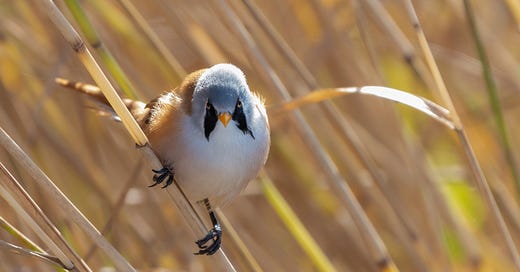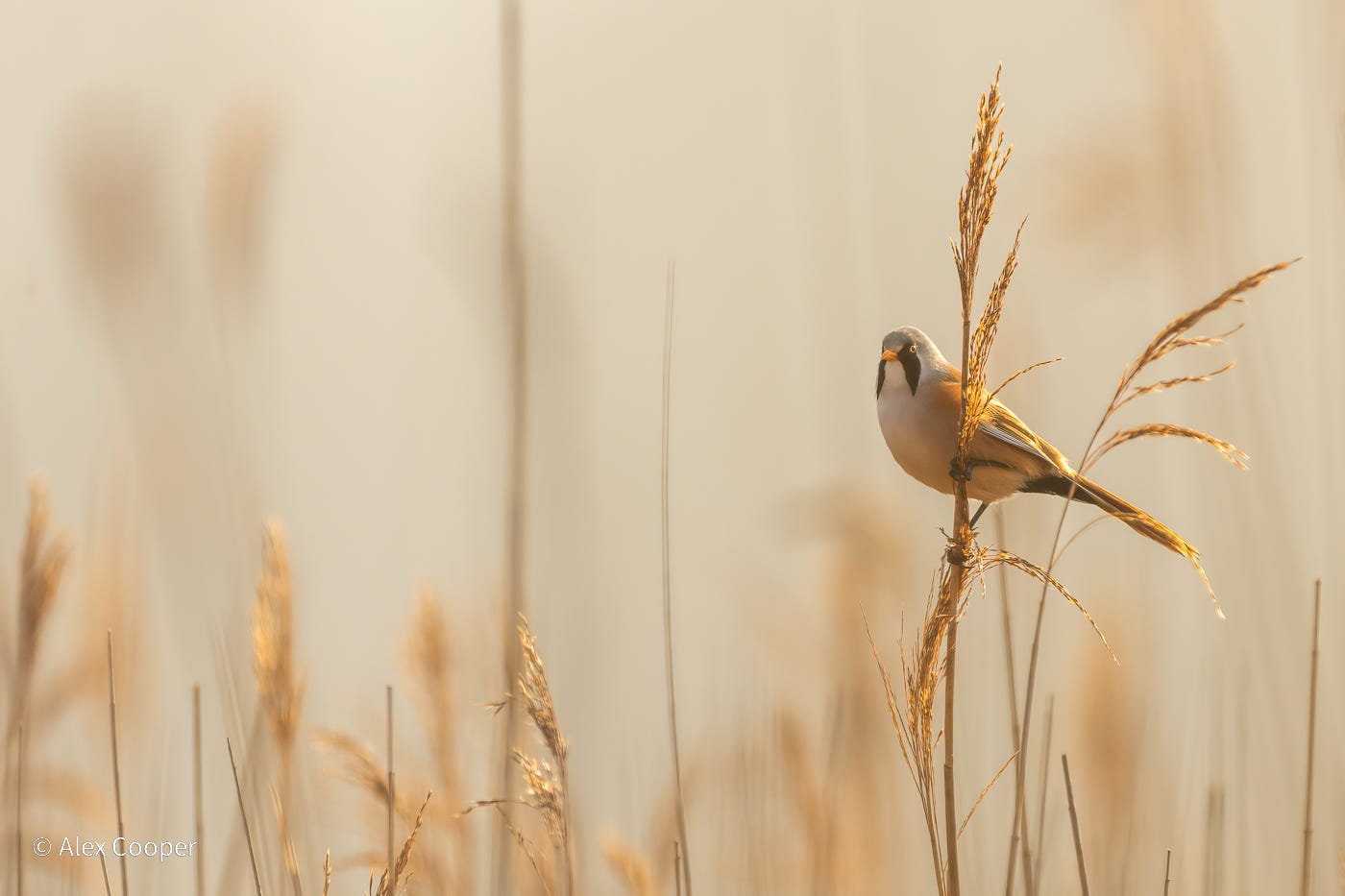The bearded tit has a silly name. But that’s okay, because it is a silly bird.
This name is both titter-inducing and inaccurate — the species is technically called a “bearded reedling” and is not in the tit family at all. Yet, British bird enthusiasts are a stubborn — and easily amused — bunch, so the colloquial “bearded tit” has stuck.
What’s in a name, though? As Juliet Capulet once said: “A rose by any other name would smell as sweet.” And as I said, just now: “A bearded tit by any other name would be as round.”
I’m a sucker for anything small, cute, and fluffy, so naturally, the bearded tit is one of my favourite birds. Don’t even get me started on the males’ delightful little moustache.
The trouble is, the bearded tit/bearded reedling/Sir Flooferton McGirthyfeather is quite a rare and elusive bird here in Britain. So rare and elusive, in fact, that I’d never seen one before, let alone photographed one.
I had to remedy that, and so I set off at the crack of dawn to a promising location on the Suffolk coast.
A Ramble in the Reed Beds
While it’s not as amusing, bearded reedling is a more accurate name, as they live and breed in the reeds.
The trouble is, there are a lot of reeds in East Anglia’s wetland habitats, and not a lot of tits to go around. In 2014 there were just 772 breeding pairs in Britain — and that was the highest number recorded in 20 years.
Unlike many small British birds, they don’t flap off to sunnier climes in the winter; they can be found year-round in the tall aquatic grasses they call home. That’s a problem in cold winters — a particularly brutal December wiped out almost half of them just over a decade ago.
I’d been out a few times looking for them but never had any luck. Often, the only sign of their presence is their distinctive pinging call, and in windy weather especially they’ll stay hidden away in the reeds.
This ain’t my first rodeo, so I’d checked the forecast and found a calm day. I was rewarded early on by the sound of little laser beams cutting through the autumn gloom, but couldn’t catch a glimpse.
I detoured to the Bittern Hide, which was aptly named as I saw one within five minutes. The hide was too elevated for any decent photos, and it quickly flapped away — once bittern, twice shy, I suppose.
Success at Last
I walked to the next hide, which was a lot more promising on the tit front, with reeds as far as the eye could see. The sightings board mentioned an otter just before dawn — I kicked myself for starting out at a different hide where all I saw was a sleepy duck.
It didn’t take long for the grasses to start pinging with the sound of promise. This time, the miniature moustachioed gentleman revealed himself, and he was close enough to get some decent shots.
N’aww. (© Alex Cooper)
It was clearly a male, as females are more of a uniform pale brown colour and don’t have the distinctive facial hair of their male counterparts. They’re still lovely and round, though, so I hope to see them in future.
All in all, though? Mission accomplished. I needed this spherical specimen in my life, and the majestic little round bastard delivered.
I’m praying for mild winters, as these little floofs must be protected at all costs.
Since writing this, I’ve seen bearded reedlings on a few more occasions. Here are a couple more photographs:
© Alex Cooper
© Alex Cooper







The Alice Cooper of round birds.